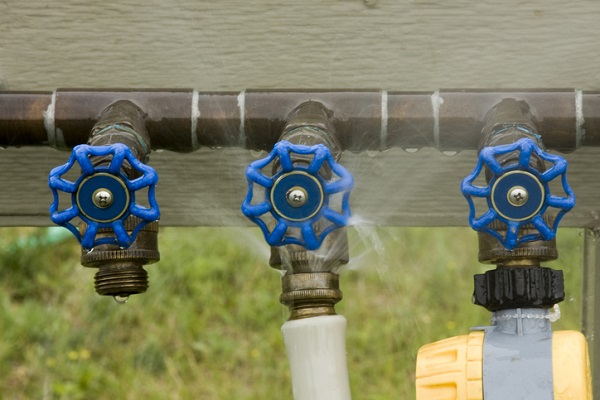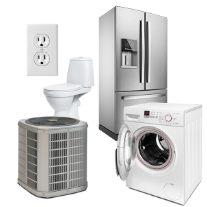A little winterization can go a long way toward preventing costly damage to a home’s water lines. Here’s how you can protect you hose bibs from cold weather.
Why it’s important
When the temperature drops below freezing, any unprotected water pipe can burst. When water freezes, it can exert up to 2,000 pounds of pressure per square inch as it expands. If a pipe breaks, it could cost you thousands of dollars to fix it. It can also be difficult to repair damaged plumbing during the winter due to freezing temperatures.
Most indoor water pipes are safe from cold weather, because home interiors are usually heated and well insulated. On the other hand, pipes within crawl spaces and external walls are more susceptible to issues, because they are more exposed to the elements. For this reason, you need to disconnect, inspect, drain, and insulate your hose bibs as early as possible.
1. Disconnect hoses from hose bibs
No matter what kind of bib you have, you need to remove splitters, connectors, and hoses before temperatures begin to fall. Since an early freeze can cause water to get trapped in a hose, it’s important to disconnect earlier rather than later. Remember, just one night of freezing weather is enough to cause a break in your pipes.
2. Inspect hose bibs
The winterization process provides an opportunity to assess the condition of bibs, fixtures, and yard hydrants. Inspect every part of your bib for leaks. If you see one, repair or replace before temperatures fall. Even the slowest drip can cause ice to build up and block a pipe or fixture. It may seem like a minor issue, but a timely repair could end up saving you hundreds to thousands of dollars down the line.
3. Drain
It’s a good idea to get as much water out of the line as possible, especially if your hose bib isn’t freeze-proof. If possible, shut off the line and drain it down. Most standard hose bibs will have a service valve. You can usually find it by looking in the basement, crawl space, near the water heater, inside a kitchen or bathroom cabinet, or next to the home’s main water shut-off. If you are unable to isolate the water supply to a particular hose bib, you should use extra insulation to reduce the risk of freezing. This step is unnecessary for yard hydrants and frost-free hose bibs, which are designed to keep water away from the ends of the spigots.
4. Insulate
The last step to protecting your outdoor faucets is to apply insulation. The simplest way to do this is to add an insulated bib cover to each outdoor fixture. These are usually dome-shaped and fit snugly over the top of exterior faucets. Made of thick foam, they do a good job of keeping cold temperatures at bay. That said, if you could not drain the valve, you will want to add extra insulation over the top of the foam bib cover.
Things to Consider
Even if you have a frost-free hose bib, you should still cover it with insulation if you live in a region with especially cold weather. While resistant to winter temperatures, frost-free bibs still contain washers and gaskets that can benefit from the added insulation.
2-10 HBW offers quality Home Warranty Service Agreement coverage for homeowners. Let us help you protect your home and budget.
Already a customer? You can renew your Home Warranty Service Agreement coverage today!
Do you have a 2-10 HBW structural warranty? You can purchase Home Warranty Service Agreement coverage today!
Related content
6 Best Tips on How to Winterize Your House








